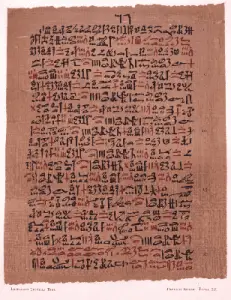Few facts about learning ancient Egyptian language/hieroglyphs:
As a day-to-day spoken language, this ancient tongue came to be extinct by the 17th century.

One of the first things that you learn when you start to study Egyptian Hieroglyphs is the set of what are called monoliteral signs. These are the signs that represent a single sound, usually a consonant. Below is a chart that shows the monoliteral signs together with their meaning. You will also find these same signs fairly early on in most good books on Hieroglyphs.
To Begin Studying Ancient Egyptian Language:
1. One should master reading phoneme letters off in the first table, the corrected table of Ossama Alsaadawi! he should stress on the Egyptian guttural sounds and master reading them correctly.
2. One should master reading all bilateral phonetic hieroglyphs according to their correct utterances.
3. One should follow all the strict rules for reading ancient Egyptian hieroglyphs.
4. One should study carefully correct interpretations of ancient Egyptian pictures because they are integrated parts of ancient Egyptian texts.
Hieroglyphs are written in rows or columns and can be read from left to right or from right to left. You can distinguish the direction in which the text is to be read because the human or animal figures always face towards the beginning of the line. Also, the upper symbols are read before the lower.
A logogram is the representation of a complete word (not individual letters of phonemes) directly by a picture of the object actually denoted (cf. the Greek “logos”, or “word”). As such, it does not take the phonemes into consideration, but only the direct objects & notions connected therewith.
Egyptian photography (a word is represented by a series of sound-glyphs of the spoken sounds) was derived through phonetic borrowing. Logograms are used to write other words or parts of words semantically unrelated to the phonogram but with which they phonetically shared the same consonantal structure.
The ancient scripts were replaced with ‘Coptic’, a script consisting of 24 letters from the Greek alphabet supplemented by six demotic characters used for Egyptian sounds not expressed in Greek.
The ancient Egyptian language continued to be spoken and evolved into what became known as the Coptic language, but in due course, both the Coptic language and script were displaced by the spread of Arabic in the 11th century. The final linguistic link to Egypt’s ancient kingdoms was then broken, and the knowledge needed to read the history of the pharaohs was lost.
